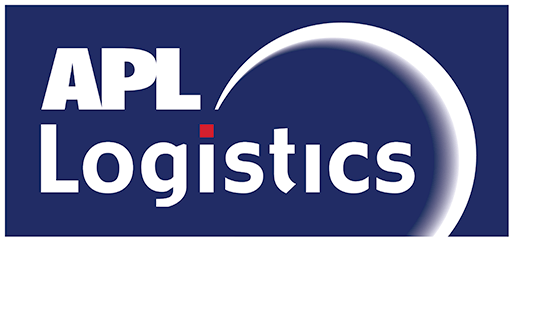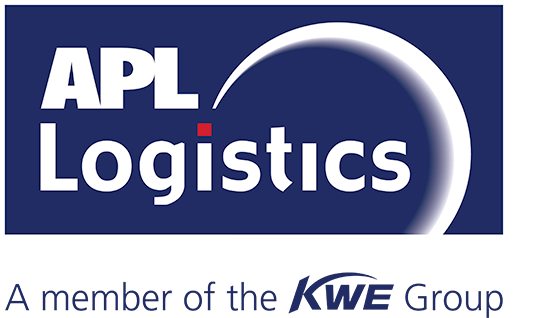October 21, 2024 in PODCASTS
Shining a Light on an APLL Warehouse
April Chapman Intro:
Hello everyone and welcome to the APLL Pulse Podcast where you can uncover new insights from the logistics and freight forwarding industry through the seasoned experts at APL Logistics, a global supply chain provider. We’ll help you keep pace with the current topics impacting businesses, and advance your logistics strategy.
April Chapman:
Hello everyone. I’m your host April Chapman. Today I am excited to introduce you to Stan Ross. He is a director over three of our North American warehouses, and I had the privilege of touring one of his warehouses in Woodridge, Illinois earlier this year, and I was so impressed. I immediately wanted to make sure I brought him on this podcast to share with what he and his team are really doing out there. But before we get to that, I just want to introduce you to Stan. So Stan, can you tell our listeners a little more about yourself and maybe your background?
Stan Ross:
Good morning, April. Thank you for the introduction and for having me on the podcast. I’m a retired army veteran. I guess you could say that I started my career in warehousing logistics while I was in the army, so about 1985 when I first went in and I retired in 1999. I’ve been with APL Logistics now since March 20th, 2023. Came on board as a group general manager. Recently was promoted to director for the three North American warehouses that you mentioned. I’ve been happily married for 32 years and I have two sons who are both married also and the one lives in Tennessee and the other in Indiana.
April Chapman:
Well, congratulations. Congratulations on just being married for 32 years. That’s a huge, that is well done. Also, thank you for your service. I did not know that about you and so thank you for your service and it made me think of the ERG that we have that is for our veterans. Have you looked into that? Are you a part of that?
Stan Ross:
Yeah, I believe that’s Valor Link and I have become a member of that team.
April Chapman:
That’s great. That’s one of our new ones and I know it’s growing really rapidly, so I’m glad to hear that you were in that. So any grandkids coming? You just said you have two married sons?
Stan Ross:
Not right now. Not yet. Still looking for that.
April Chapman:
My friends all tell me that’s the best.
Stan Ross:
Yeah, I’m looking forward to it.
April Chapman:
Well, so you’ve only been here since 2023 and taking over these sites, but let’s talk about kind of when you first came in and I know that you’ve made some impressive changes. So what were some of the quick wins or improvements that you were able to make?
Stan Ross:
The warehouse of Woodridge operates with a customer who’s been a partner of ours for over 26 years. So the warehouse, some of the opportunities I noticed when I first came on board at the warehouse were related to just the overall warehouse environment. It’s been around for a long time. So I was able to partner with our customer and we focused on ways to improve the associate’s engagement. We spent the next several months really upgrading restroom, new office environments, desk areas. We remove the older fluorescent lighting and installed new LED lighting, which really makes a huge difference in a warehouse environment. Cost savings plus it just really brightens the environment. We even built an entirely new break area, so the break area we built was large enough to accommodate all of our employees as opposed to taking separate individual breaks or small group breaks. They’re now able to all gather at one time and we have the open market style of food kiosks and snacks that they’re able to get and plus a whole wall of microwaves for them to heat their food there.
April Chapman:
Yeah, I did notice that it was an easy place if you forgot your lunch, you didn’t need to worry at all. There was plenty for you to choose from and I think that that goes to making just a better working environment. I mean when we have quick access to the things we need. And I also noticed you had two areas for that, if I recall. Is that right? You had in a break room and then you had it kind of in a bigger area. Is that right?
Stan Ross:
There’s one initial little smaller break room up front, but it had the kiosk thing type in it also. We actually have a third one way back in the back corner of the building you probably didn’t get to. So yeah, there’s plenty of space.
April Chapman:
Yeah, I would say that’s a great improvement because just even looking through some of the feedback that I’ve seen, people have said, oh, we want to make sure we have vending machines in our warehouses, but you have really done it well and you partnered with a company and it looks like you’ve even got it branded with APL Logistics. Right, but it’s another company that is in there, right?
Stan Ross:
Yes. You do all the branding just like you saw. It’s very good, very well done.
April Chapman:
Yeah, it is. It’s very welcoming. So another thing I noticed was the prevalence of the Maxims, and I’m going to stop here because I want to say thank you since I’m communications and just that’s our job is to communicate the maxims or maxims are our guiding principles and we have four Maxims that we try to make decisions by in this company and we have presented those to everyone, but when I walked into your space, I saw them everywhere and not only did I see, I saw them because they were big enough that you could read and it was like everywhere I turned I felt like, Hey, this, you have really integrated into the culture there, so how have you been able to kind of weave those in?
Stan Ross:
One thing that stood out to me when I first came on board with APL logistics was those Maxims and the values, I firmly believe in them and I wanted to share that with everybody. I wanted to ensure everybody in our facility understood how important they are. First thing we did was we took those graphics that you had available and we blew them up 50 by 60 frame canvas posters, just big right in your face kind of displays. So we put those at the entryway right when you come in. We added ’em to the conference rooms, to the break rooms and any employee common areas, and then also have them displayed on all of our, I believe we’ve got 10 different monitors throughout the facility. So we’ve got videos of them, we’ve got them displayed statically all over the facility. We also started talking about them in our pre-shift meetings. So first shift, pre-shift meeting, second shift meetings. We discussed them, we would cover one a day or we would go out and ask questions after the meetings to make sure people were really getting it.
April Chapman:
I like that idea. I think that we should be doing that in all, whether you’re in a warehouse, whether you’re in just a group that’s even my team is spread out all over the globe. We have our regular meetings to really incorporate and weave those in. So I hope those listening from our company are hearing that and say, let’s continue to weave those into the discussions that we have. So thank you for doing that so well, there was another thing then I noticed at your place that was different than other places, which is that I saw some robots and I thought, Ooh, super cool, let’s talk about that and can you just share with our audience about what Project Buddy is?
Stan Ross:
Another thing that happened when I first came on board, I was made aware of the robot project. We have 22 of them. They work in an area of the building where we have a lot of small bins and parts. So those robots were designed to assist our pickers to be more efficient at their picking tasks. One of the first primary concerns that was brought to my attention was, are these robots going to be taking our job? We pointed out that the robots, they’re there to assist. They don’t have arms, so they need you to load the parts for them. They’ve got an iPad, they need interaction. We implemented a change management and communication process to really help our associates understand how the robots were there to assist. And someone mentioned that the robots were like, you’re picking Buddy. So that’s how we got the project named Project Buddy.
April Chapman:
Oh, I did not know that. That’s really interesting because they really are your buddy. They take away a lot of steps that I think people would’ve had to make. Not that they’re still not walking up and down those aisles, but their feet are probably appreciative later in the day.
Stan Ross:
Absolutely, yes. You’re meeting the robot at its pick location instead of having to follow it around or push a cart around like we used to.
April Chapman:
Right, right. And I know that there’s something that it does with language. Can you just tell everybody what it does with that?
Stan Ross:
Each person that works in the robot area has a badge so that it knows when once you approach the robot, it immediately recognizes you electronically. It puts your picture up on there, and it also will change to your preferred language. So if you’re a Spanish speaker, then it’ll immediately change over to Spanish for you.
April Chapman:
I love that. It’s just so inclusive. Again, it’s inclusive of just different kind of people in our warehouses, different backgrounds, different perspectives. I love that. And that is where I want to go next actually. So another thing I truly loved about your warehouse was just walking around. I literally took note of how much diversity that there was in age and in gender and in race, and I was really impressed. And so what advice do you have for other warehouse directors or managers about the benefits of encouraging those kinds things?
Stan Ross:
Well, I’m glad you noticed the value and diversity that we have in the building. That and the collaboration. I guess I would encourage other directors and managers to embrace diversity because it truly leads to innovative solutions, improves team morale and develops an inclusive working environment. And by fostering open communications and creating opportunities for our cross team collaboration, the managers and directors will see all the diverse perspectives improve overall site success.
April Chapman:
Yeah, I definitely agree because diversity is one of those values that we have, and so making sure that we have this diverse culture and it crosses over from being in the warehouse, but being in any team really,
There’s value in having different perspectives at the table. And so I really love what you’re doing out there, Stan. I was so impressed. I’m so glad that you’re able to come on here and talk about especially some of those quick wins. So I hope that we have a lot of listeners that are out there going. You know, we can make a big difference with some small changes and really start pursuing those because we want people to be happy here. We want people to love working. We want them to love coming to work. I think that’s the kind of environment you’ve created. Thank you so much, Dan.
Stan Ross:
Thank you.
April Chapman:
All right, well, thanks for listening today and we hope to have you next time on the APLL Pulse Podcast. Thank you. Bye-Bye.
April Chapman Outro:
See you next time on the APLL Pulse podcast. Thanks for joining us today. If you like what you heard or if you have any questions about today’s episode, reach out to us at Global_marketing@apllogistics.com. Make sure to subscribe to us on your favorite podcast apps. You’ll also find us on LinkedIn or visit us at apllogistics.com. We’ll see you next time on the APLL Pulse podcast.
Thanks for joining us today. If you like what you heard or if you have any questions about today’s episode, reach out to us at global_marketing@apllogistics.com. Make sure to subscribe to us on your favorite podcast apps. You’ll also find us on LinkedIn or visit us @apllogistics.com. We’ll see you next time on the APLL Pulse Podcast.
Listen on Spotify Listen on Apple Podcasts Watch on YouTube


